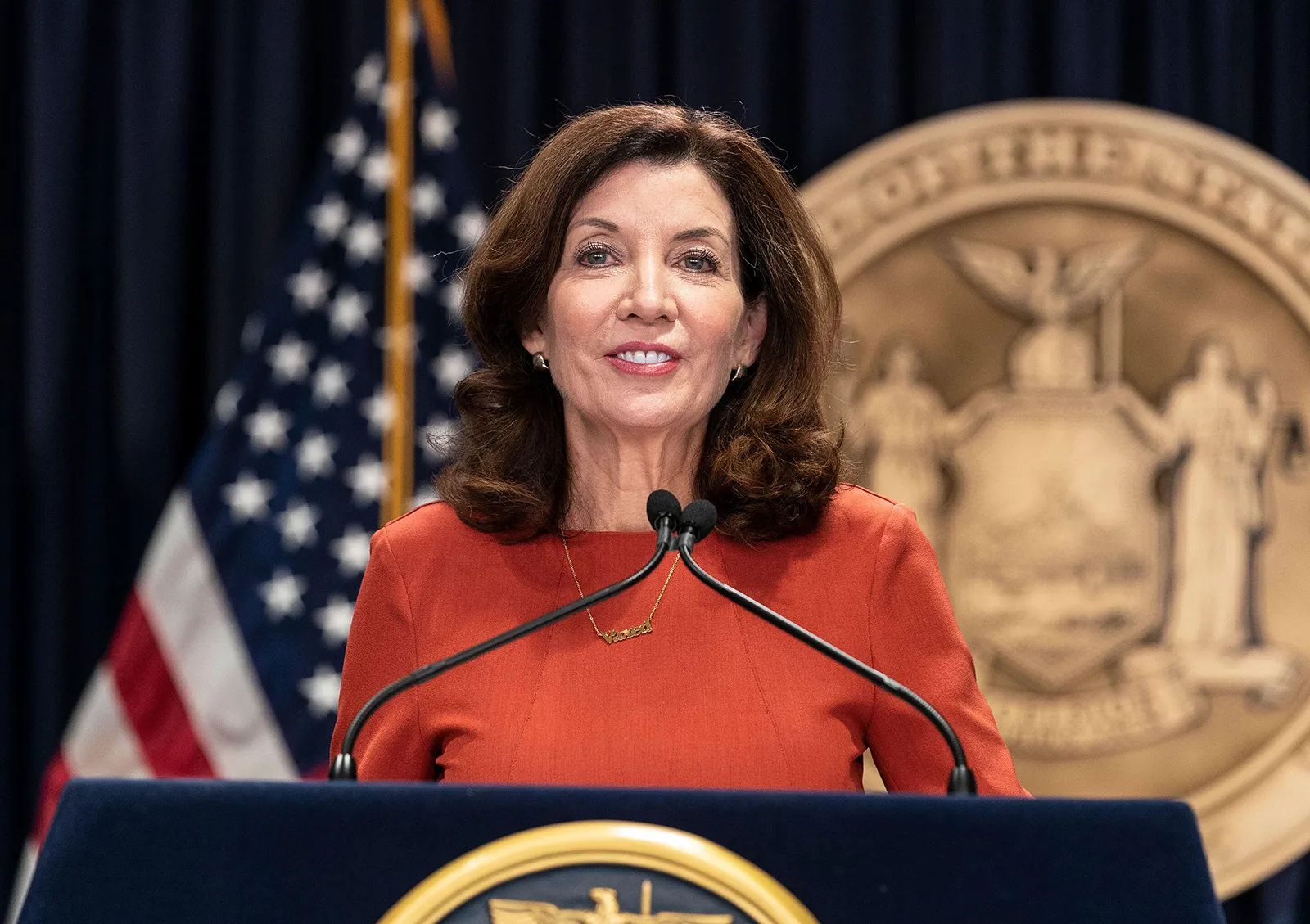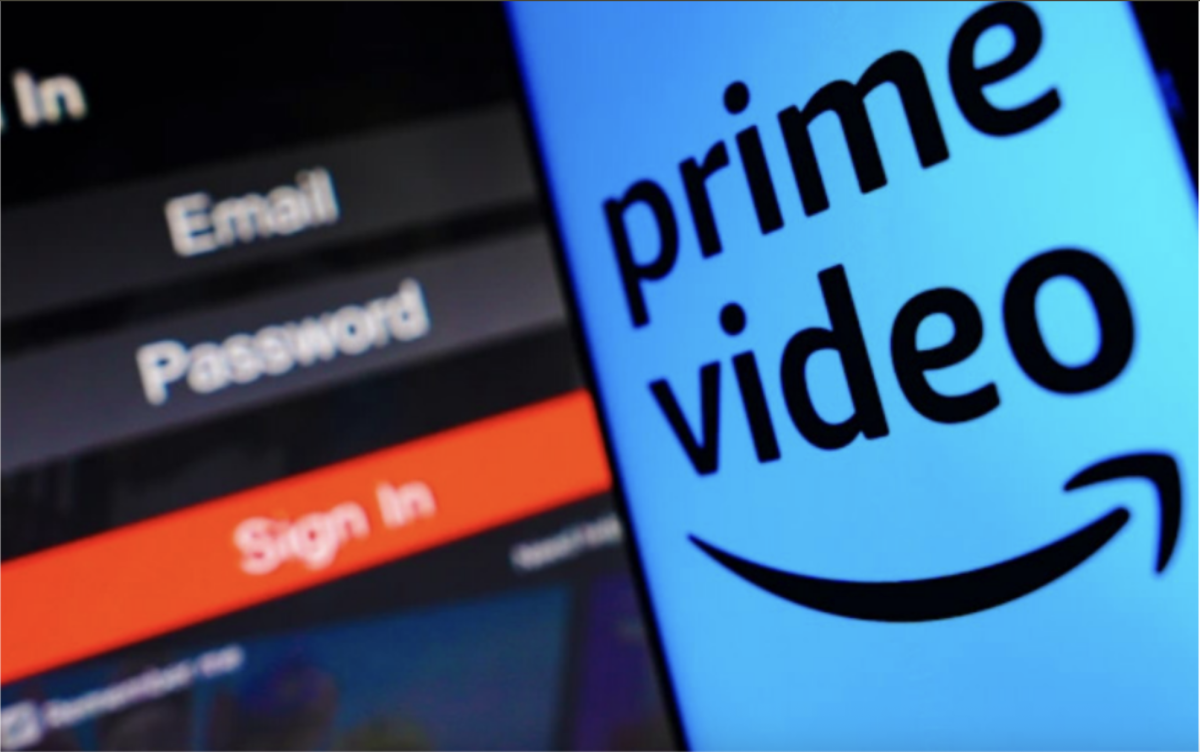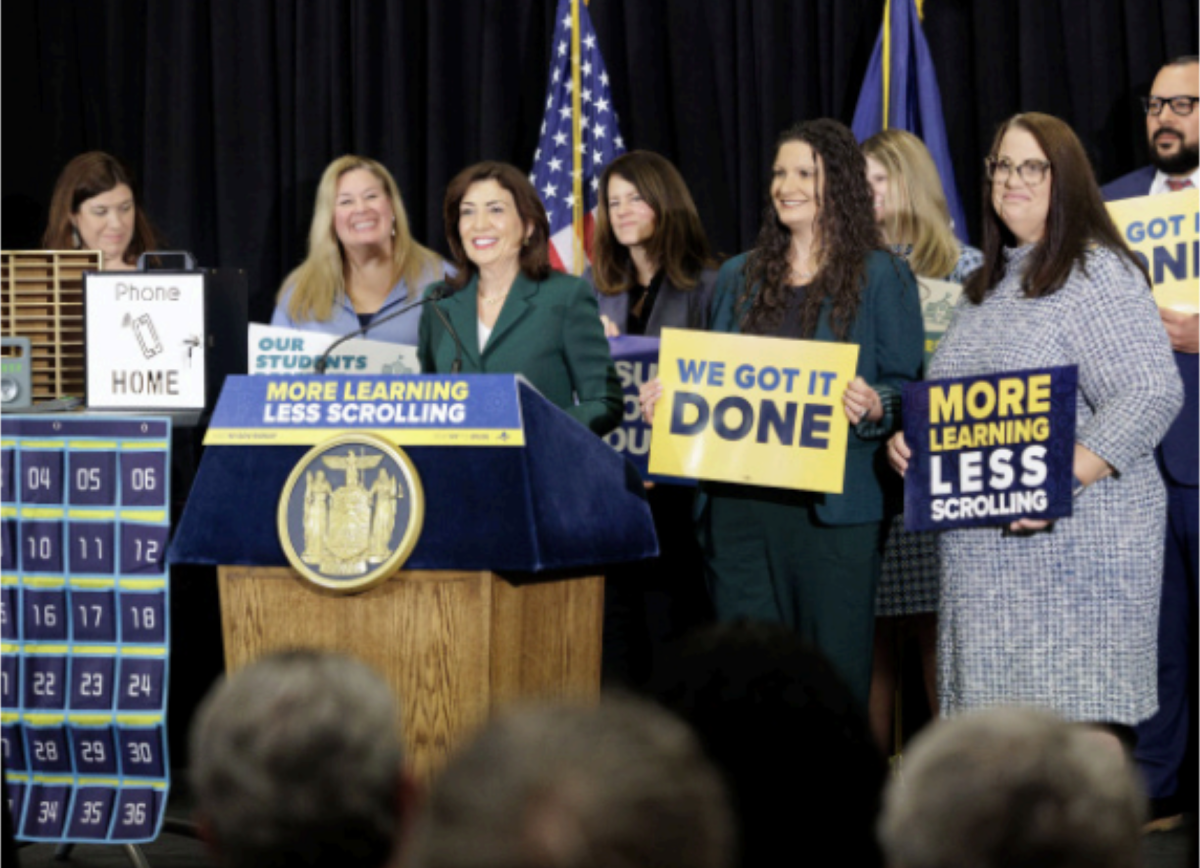Starting September 2025, students at Mamaroneck High School will no longer be able to scroll through TikTok between classes or sneak texts under their desks. Governor Kathy Hochul’s statewide Bell to Bell proposal, officially passed on May 1, 2025, will prohibit smartphone use for all K-12 public school students during the school day. The new law is designed to create more focused and socially engaged classroom environments by cutting down on digital distractions.
Under the law, students will be expected to store their phones in designated holders or secured spaces from the first bell to the last. Exceptions will be made only for medical needs, IEP accommodations or translation purposes.
The move has sparked widespread discussion among educators and students at MHS, many of whom have long dealt with the challenges of cellphones in class. This year, MHS has enforced a “no phone visible” policy in school; all classrooms have a phone holder for storing phones during class. Regardless of whether teachers use it, phones are not to be taken out during class.
Many teachers at MHS view the upcoming policy as a step toward enhancing student focus and classroom engagement. Jake Lee, an AP Statistics and Pre Calc teacher, states that a cellphone ban will help students “improve their focus and attention spans that are being damaged through 30-second TikTok videos.”
He adds that it will help students be more present during lessons, instead of constantly distracted. Additionally, Lee notes that the ban will help teachers “manage classrooms more easily,” as they’ll no longer need to “micromanage every student with their cellphone.”
Joseph Liberti, who teaches Original Civic Research and Action (OCRA)—a class that relies on phones for professional communication—acknowledges both sides of the issue. He explains that phones are “tools [that] can be good or bad,” since they are “designed to keep you engaged,” but also serve as an important link between OCRA students and “experts in the field and professors at universities.”
The ban presents a “challenging change” for many OCRA students, and he’s even considering turning his classroom landline into a communal “OCRA phone.” Still, Liberti expresses concern that phones hinder students’ “skills to communicate with [their] peers,” noting that “unless we are able to find a way to educate students about how to control their phones instead of having the phone control them, the ban is necessary.”
Student reactions to the ban are varied. Juliana Goode (’26) commented, “I understand the need to focus, but sometimes I use my phone to check the time or coordinate with my parents. I hope the school provides alternatives for these situations.”
On the other hand, Cleo Ingalls (‘27) supports the initiative: “Phones can be a big distraction. Without them, we might have more meaningful conversations and connections with our peers, as well as be more focused.”
Cathy Quackenbush, Coordinator of Counseling, emphasized the potential mental health advantages of the policy: “Constant exposure to social media can increase anxiety and feelings of isolation among students. Limiting phone use during school hours could alleviate some of these issues and promote better interpersonal relationships.” She further notes that the school administration will be developing a plan to implement the smartphone ban effectively, “but it will take some time to see how the ban will be executed at MHS.”
As our school prepares to adapt to this new policy, the focus remains on creating an environment conducive to learning and personal growth. While challenges may arise during the transition, the collective goal is to enhance student well-being and academic success by minimizing distractions.









